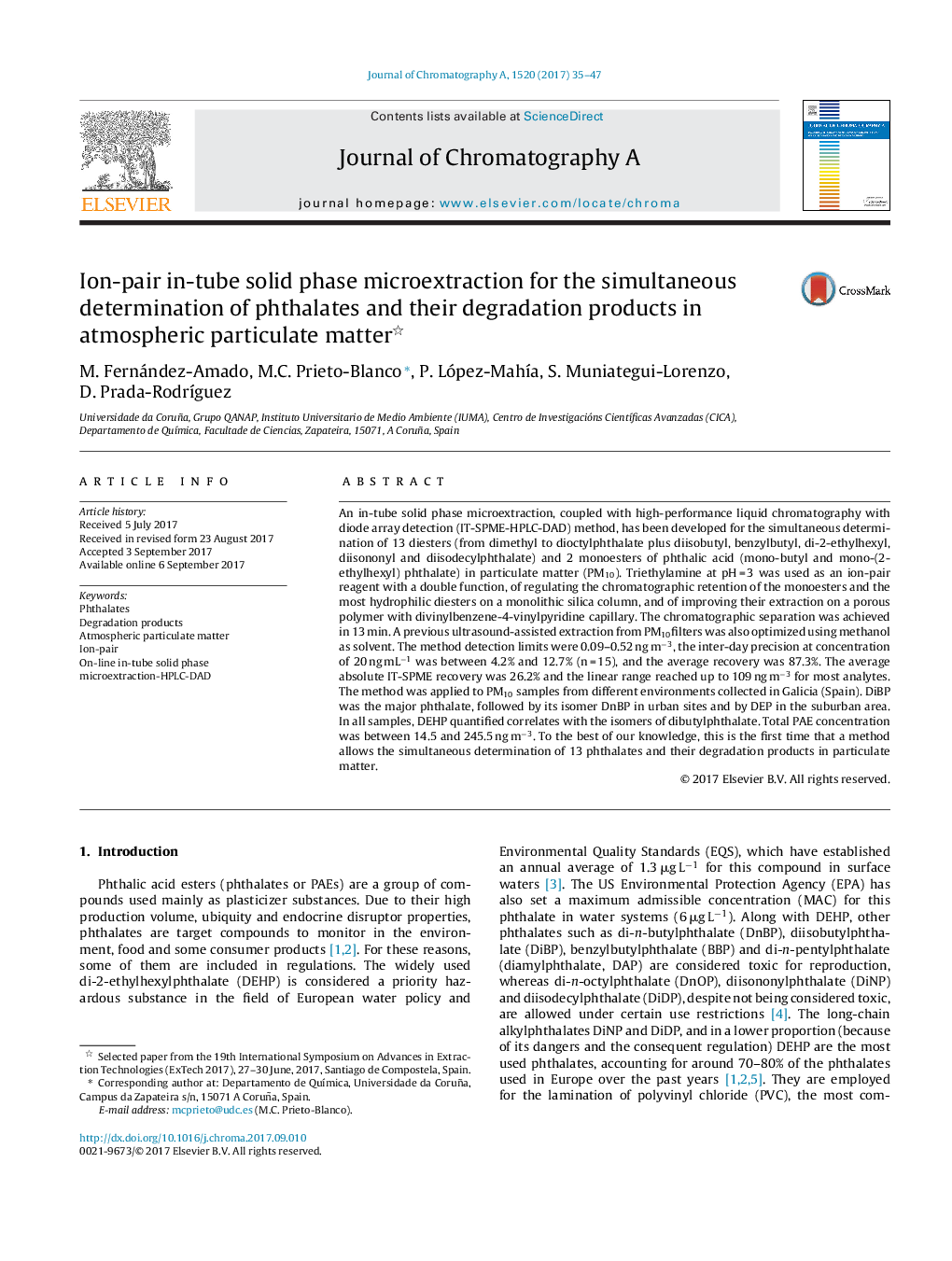| Article ID | Journal | Published Year | Pages | File Type |
|---|---|---|---|---|
| 5134853 | Journal of Chromatography A | 2017 | 13 Pages |
â¢Fifteen phthalates (dialkyl phthalates and their degradation products) were separated within 13 min.â¢Methanolic ultrasound-assisted extraction from PM10 samples was optimized.â¢Triethylamine at pH = 3 was used for the optimization of IT-SPME and chromatographic separation.â¢The IT-SPME-HPLC-DAD method was validated for the determination of 15 PAEs in PM10 samples.â¢The dominant phthalate was DiBP, and DEHP correlates with DBP isomers.
An in-tube solid phase microextraction, coupled with high-performance liquid chromatography with diode array detection (IT-SPME-HPLC-DAD) method, has been developed for the simultaneous determination of 13 diesters (from dimethyl to dioctylphthalate plus diisobutyl, benzylbutyl, di-2-ethylhexyl, diisononyl and diisodecylphthalate) and 2 monoesters of phthalic acid (mono-butyl and mono-(2-ethylhexyl) phthalate) in particulate matter (PM10). Triethylamine at pH = 3 was used as an ion-pair reagent with a double function, of regulating the chromatographic retention of the monoesters and the most hydrophilic diesters on a monolithic silica column, and of improving their extraction on a porous polymer with divinylbenzene-4-vinylpyridine capillary. The chromatographic separation was achieved in 13 min. A previous ultrasound-assisted extraction from PM10filters was also optimized using methanol as solvent. The method detection limits were 0.09-0.52 ng mâ3, the inter-day precision at concentration of 20 ng mLâ1 was between 4.2% and 12.7% (n = 15), and the average recovery was 87.3%. The average absolute IT-SPME recovery was 26.2% and the linear range reached up to 109 ng mâ3 for most analytes. The method was applied to PM10 samples from different environments collected in Galicia (Spain). DiBP was the major phthalate, followed by its isomer DnBP in urban sites and by DEP in the suburban area. In all samples, DEHP quantified correlates with the isomers of dibutylphthalate. Total PAE concentration was between 14.5 and 245.5 ng mâ3. To the best of our knowledge, this is the first time that a method allows the simultaneous determination of 13 phthalates and their degradation products in particulate matter.
